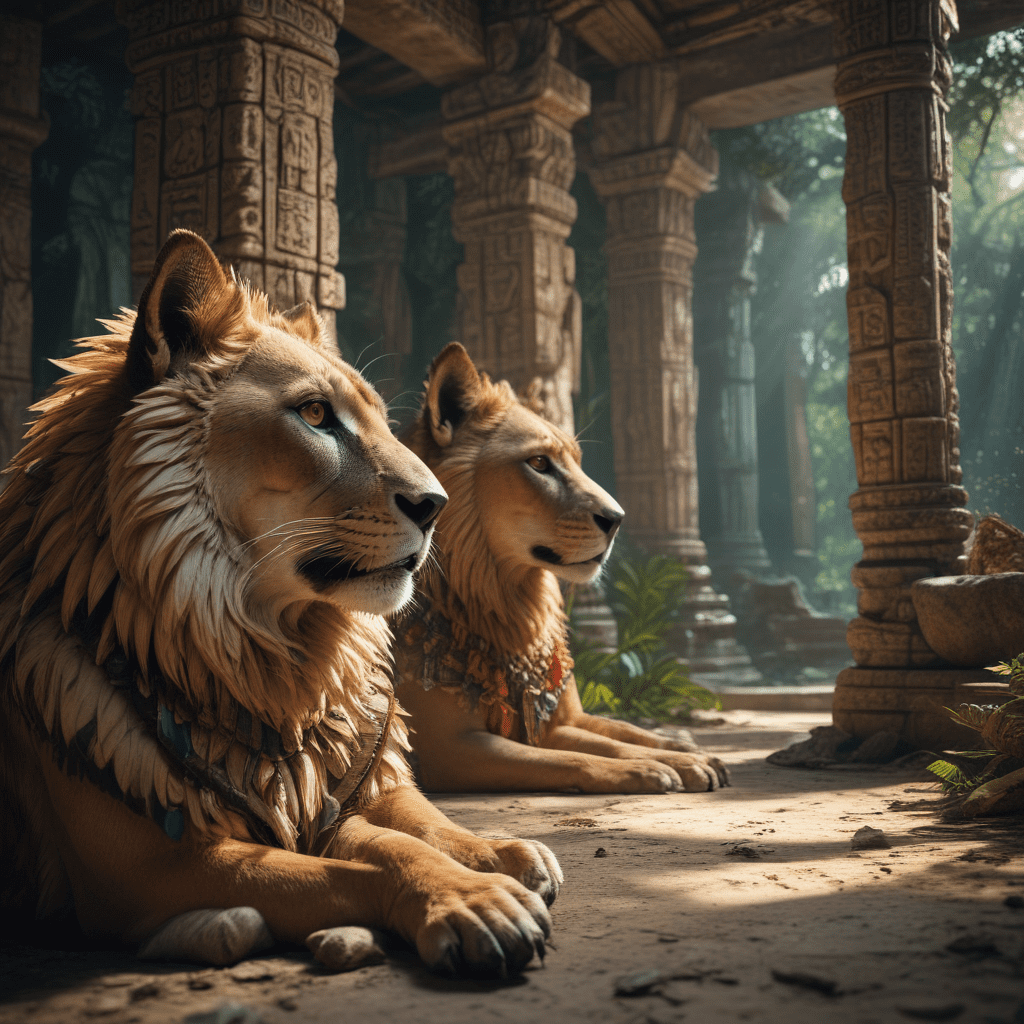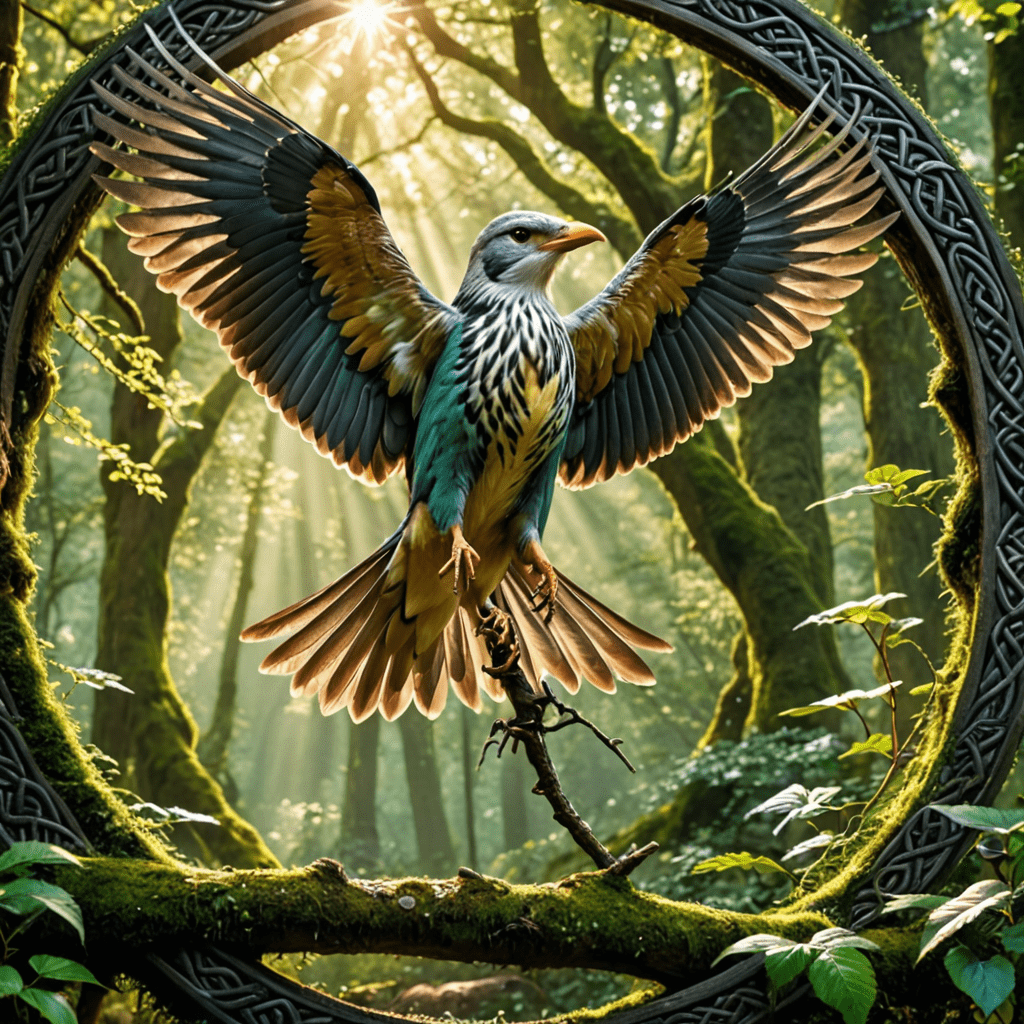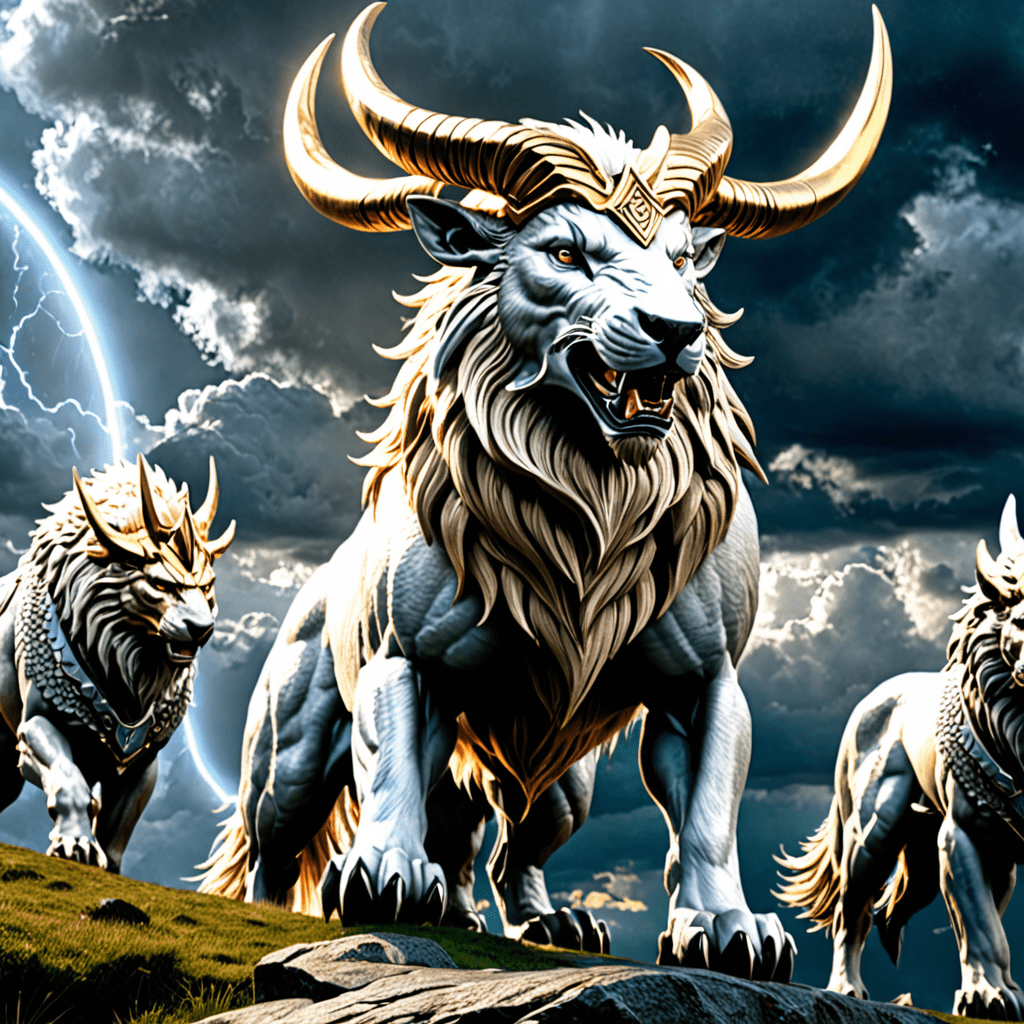Introduction
The ancient Maya civilization, renowned for its advanced calendar system, intricate hieroglyphics, and impressive architecture, also held a deep reverence for the natural world. Animals played a pivotal role in their mythology, religion, and everyday life, embodying various symbolic meanings and serving as intermediaries between the human and spiritual realms. This article delves into the fascinating world of sacred animals in Mayan mythology, exploring their significance, symbolism, and impact on this remarkable culture.
The Importance of Animals in Mayan Culture
From the soaring eagle to the slithering serpent, animals were deeply intertwined with the fabric of Mayan society. They were not merely seen as sources of food or resources but as powerful entities possessing unique characteristics and abilities. Animals served as totems, representing specific lineages or communities, and were believed to possess supernatural powers that could influence human affairs. The Maya meticulously observed animal behavior, interpreting their actions as omens and messages from the gods. This deep connection with the animal world permeated every aspect of Mayan life, shaping their mythology, art, architecture, and religious practices.
The Four Principal Sacred Animals
Among the myriad of animals revered by the Maya, four stood out as particularly sacred: the Kukulkan, the jaguar, the macaw, and the Chaac. These four creatures embodied the essential elements of the cosmos and were believed to maintain the balance of the world.
3.1. The Kukulkan (Feathered Serpent)
The Kukulkan, also known as the Quetzalcoatl in Aztec mythology, was a prominent deity associated with creation, fertility, and the wind. Depicted as a feathered serpent, this mythical creature symbolized the union of the heavens and the earth, representing the duality of life and death. The Kukulkan was often portrayed as a powerful sky god, bringing rain and ensuring the prosperity of crops.
3.2. The Jaguar
The jaguar, revered for its strength, stealth, and nocturnal habits, was associated with the underworld and the realm of the dead. Often depicted in Mayan art with spots resembling stars, the jaguar was believed to guide souls on their journey to the afterlife. Additionally, the jaguar was seen as a symbol of power and royalty, with Mayan rulers often donning jaguar pelts and headdresses to signify their authority.
3.3. The Macaw
The vibrant macaw, with its stunning plumage and piercing calls, was considered a sacred messenger between the human and divine realms. Its ability to mimic human speech further enhanced its association with communication and prophecy. The macaw was often depicted in Mayan art, adorned with elaborate headdresses and symbolizing the voice of the gods.
3.4. The Chaac (Rain God)
The Chaac, the rain god, was responsible for bringing life-giving rain to the parched lands. Depicted with a distinctive reptilian snout and prominent fangs, Chaac was believed to control the forces of nature and ensure the fertility of the earth. Offerings of food, incense, and even human sacrifices were made to appease Chaac and ensure abundant rainfall.
5. Animal Symbolism in Mayan Art and Architecture
Mayan artists skillfully incorporated animal motifs into their art and architecture, transforming everyday objects into symbolic representations of the cosmos. Animals adorned intricate murals, pottery designs, and monumental sculptures, serving as visual reminders of the interconnectedness between the human and natural worlds. The Kukulkan, with its feathered body and serpent head, was a prominent figure in Mayan iconography, symbolizing both the heavens and the earth. Jaguars adorned elaborate thrones and temple facades, representing power and authority. Macaws, with their vibrant colors and piercing cries, were depicted on ceramic vessels and headdresses, signifying communication with the gods. The symbolism embedded in animal representations served as a powerful tool for storytelling, conveying complex mythological narratives and religious beliefs.
6. The Role of Animals in Mayan Religion and Rituals
Animals held a central role in Mayan religious ceremonies and rituals. Sacrifices of various animals, including jaguars, deer, and turkeys, were performed to appease the gods, ensure bountiful harvests, and seek guidance for important decisions. Bloodletting rituals, often involving the piercing of tongues or genitalia, were also conducted to offer blood as a sacred sacrifice to the deities. Animal masks and costumes played a crucial role in religious dances and performances, allowing participants to embody the spirits and powers of the animals they represented. These rituals served to strengthen the bond between humans and the animal world, seeking to harness the forces of nature and maintain cosmic equilibrium.
7. Animal Sacrifice in Mayan Society
Animal sacrifice was an integral part of Mayan religious practices, reflecting their belief in the interconnectedness of the living and the spiritual realms. Sacrificial offerings were believed to appease the gods, ensuring their continued favor and protection. Animals were carefully chosen based on their symbolic associations, with each creature embodying specific qualities or representing particular deities. Jaguars, associated with power and royalty, were often sacrificed during important ceremonies. Deer, symbolizing fertility and renewal, were offered to ensure bountiful harvests. Macaws, believed to be messengers between humans and gods, were sacrificed to convey prayers and offerings to the divine realm. While the practice of animal sacrifice may seem brutal to modern sensibilities, it held profound significance for the Maya, representing a vital act of reciprocity and appeasement to maintain balance in the cosmos.
8. The Impact of Animals on Mayan Mythology and Culture
The deep reverence for animals permeated every aspect of Mayan culture and mythology, shaping their understanding of the world, their religious beliefs, and their artistic expressions. Animals were not merely seen as creatures or resources but as powerful beings with unique abilities and connections to the spiritual realm. Through the observation of animal behavior, the interpretation of their symbolism in dreams and omens, and the integration of animal motifs in their art and rituals, the Maya developed a profound understanding of the interconnectedness of all living creatures. This reverence for the animal world continues to inspire and fascinate us today, offering a glimpse into the rich and complex cosmology of this remarkable ancient civilization.
9. Theories and Interpretations of Animal Significance
Scholars continue to explore and debate the various theories behind the significance of different animals in Mayan mythology. Some interpretations focus on the symbolic associations of each creature, with the jaguar embodying power, the deer representing fertility, and the macaw symbolizing communication. Others delve into the role of animals as intermediaries between humans and the gods, serving as messengers or guides for navigating the complexities of the spiritual realm. The interpretation of animal symbolism can also vary across different regions and time periods within Mayan civilization, reflecting evolving beliefs and practices. By studying and analyzing Mayan art, architecture, and written records, scholars continue to unravel the intricate web of meanings and associations woven around the figures of these sacred animals.
10.Conclusion
The reverence for sacred animals in Mayan mythology reveals a profound respect for the natural world and a belief in the interconnectedness of all living creatures. From the majestic Kukulkan to the powerful jaguar, each animal embodied specific qualities and played crucial roles in maintaining balance and harmony between the human and divine realms. Their symbolic representations adorned Mayan art and architecture, serving as visual reminders of the complex cosmology and deep-rooted spiritual beliefs. The study of sacred animals in Mayan mythology provides valuable insights into this remarkable ancient civilization, offering a glimpse into their understanding of the world, their relationship with nature, and their enduring legacy in the realm of mythology and folklore.
11.Frequently Asked Questions (FAQ):
Q: What were the most important sacred animals in Mayan mythology?
- A: The Kukulkan (Feathered Serpent), the jaguar, the macaw, and the Chaac (Rain God) were the four primary sacred animals in Mayan mythology, each representing essential elements of the cosmos.
Q: How were animals depicted in Mayan art and architecture?
- A: Mayan artists skillfully incorporated animal motifs into their art and architecture, with the Kukulkan, jaguar, macaw, and other animal figures adorning murals, pottery, sculptures, and temple facades to convey symbolic meanings and mythological narratives.
Q: What role did animals play in Mayan宗教 and rituals?
- A: Animals played a central role in Mayan religious rituals, with sacrifices offered to appease gods, ensure bountiful harvests, and symbolize reciprocity between the human and divine realms. Animal masks were used in ceremonial dances to embody the spirits of these revered creatures.
Q: Why were animal sacrifices performed by the Maya?
- A: The Maya believed animal sacrifices were necessary appeasements to appease the gods and maintain cosmic balance. Different animals held specific associations, with jaguars symbolizing royalty, deer representing fertility, and macaws signifying messengers between worlds.
Q: What impact did animals have on Mayan culture and mythology?
- A: The reverence for animals shaped Mayan understanding of the universe, beliefs about the spiritual realm, and artistic expressions through animal symbolism in art. It reflected their belief in the interconnectedness of all living things and continues to inspire us today.


